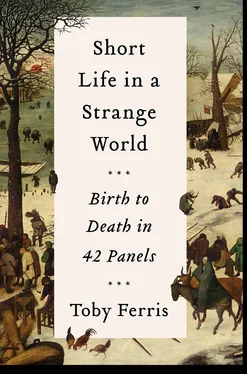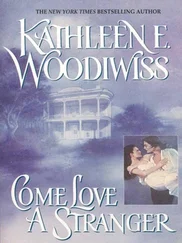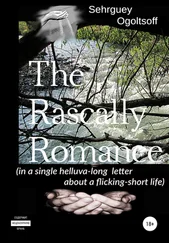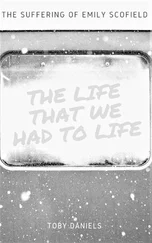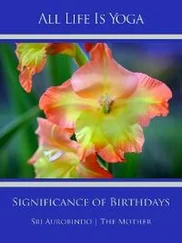And there are a couple of Bruegels: Dulle Griet (1563) and Twaalf Spreuken or Twelve Proverbs (1558). Why else would I be here?
In 1562, Bruegel inaugurated his new primary focus on panel painting with a series, or sequence, or family of three panels of near-identical dimensions and congruent, Boschian subjects: Dulle Griet , The Fall of the Rebel Angels and The Triumph of Death .
Bruegel was known in his lifetime as the new Bosch. His works were marketed as such (and some of the earlier engravings – for example, Big Fish Eat Little Fish – were falsely signed Hieronymus Bos , probably at the instigation of Bruegel’s printer, Hieronymus Cock). To his contemporaries, he was not Peasant Bruegel, but Bosch-Bruegel. The earliest commentator on his work (Lodovico Guicciardini, writing in 1567) remarked on the rebirth in these latter days of the great visionary of the North (Bosch) in the person of Pieter Bruegel.
We now clearly see that Bruegel was a very different, and considerably greater, painter than Bosch. If Bruegel was an inheritor of the Bosch style early in his painterly career, he was also a humanist painter at ease with the carnivalesque, the Rabelaisian; Bosch, who died only a few years before Bruegel was born, was a medieval painter for whom monstrosity was an index of spiritual corruption. Bosch’s monsters mutate in Bruegel into something more arch, more playful; they are curiosities escaped from a Wunderkammer , not devils slithering up through the cracks in creation, less Satanic than Linnaean.
This is reflected in the catalogues of the two painters. Try drawing up a spreadsheet of All Bosch, a great Bosch Object, at your peril. You will never get beyond the tangle of Workshop of …, or School of …, or Follower of … The Bosch Object is all smoke and mirrors. The Bruegel Object is all meticulous documentation.
In Dulle Griet , a supersized and deranged woman is plundering in front of a hell’s mouth, marauding on the fringes of the human and spiritual worlds; she leads an army of tiny females who are engaged hand-to-hand with Boschian creatures and armed men. A second large figure, a giant, sits on top of a building with a ship of fools across his shoulders, ladling money out of his gaping arse. The panel is a melting pot of proverbs.
Baudelaire in the 1850s described Bruegel as a political artist. Perhaps this is the kind of thing he had in mind. The regent of the Netherlands was called Margaret, Margaret of Parma; Dulle Griet translates roughly as Mad Meg . The Netherlands are aflame and the devils are out, cities burning, society collapsing, imploding. But this is 1561 or 1562. While there are tensions, we are a few years out from the hedge-preaching and the Imagestorm , the Eighty Years’ War.
Perhaps it is a battle of the sexes, a reactionary taming of the (untameable) shrew, a world-turned-upside-down where women wield manic power, an uproarious crisis of authority. Or perhaps we should look at Bruegel’s drawings for the engravings of the seven deadly sins – there are parallels between Griet and the figure of Iracunda, or Wrath.
On the train on the way over I read an exhaustive and interesting essay by Margaret Sullivan in which she traces the iconography of the stock figures of Madness and Folly and links them to Meg and the giant respectively, but I find I can’t remember much about it as I stand here. I content myself instead with trying to work out the architectural division of the space, the logic of the towers and the curtain walls, and enjoying the ruddy sky.
‘Some pages [of Alexander Wied’s very good book on Bruegel] read like a parody of the frenzied activity of modern scholars – most strikingly the bewildering pages on Dulle Griet , who nonetheless remains triumphantly unexplained.’
Review by Helen Langdon of Alexander Wied’s Bruegel in the Burlington Magazine , January 1982
Do you formulate or access a reading or readings as you stand in front of a painting? Readings are always present – the art historian Michael Baxandall says that we do not discuss paintings but descriptions of paintings – but readings, or descriptions, are distinct from the process of observation. A reading, or a description, is grounded on a logical sorting, a winnowing of detail; observation is messier, more repetitive, obsessive, returning again and again to the same objects. Whatever readings or descriptions you arrive with, you can be sure the painting will cock a snook at them.
I suppose a professional might notice the way his or her attention drifts around the panel, recording shifts of attention as flickers of data. I am not a professional. I make, nonetheless, the following notes in my notebook: the experience of standing in front of Dulle Griet , I record, is one of dissipation. My attention fragments over the detail. I look closely, not broadly. It is an experience of noticing, in between bouts of inattention and mind-wandering: of looking with the eyes alone. It is not an experience of understanding. The things you thought you would see are not the things you see. Who knows what you now think? Who cares, really?
I do notice one thing above everything else. The sky is ruddier than I thought. I have never seen a sky remotely as ruddy as this in any reproduction. That sky really is burning. I stare at it. It is a colour field. You have a little psychological wobble if you stand in front of it long enough. Had Bruegel met Rothko or Van Gogh, they would have agreed on this at least: saturated colour impinges on you.
How? Emotionally? Viscerally? Not viscerally – whatever is happening is definitely happening in my head, somewhere behind my eyes. I feel, on this occasion, no emotion. Is it evocative? It does not evoke memory, or association. It is just an overriding perceptual stimulus. We have a less fully-worked-out network of descriptors for percepts than we do, say, for emotions, hence our difficulty discussing aesthetics. Percepts are just more or less noteworthy.
Yes, there it is: to stand in front of Dulle Griet is to experience a noteworthy percept, of ruddiness.
Perhaps painters in the sixteenth century – who had been apprenticed to other painters from a young age, grinding and mixing paints, staring at bowls and pastes and palettes of saturated colour morning to night, lost dreamy adolescents there in the workshop reeking of glues and sizes, while outside the world was passing through a duller, less superficial age, an age of few images and no industrial dyes – perhaps sixteenth-century painters, in short, were more sensitive to the allure of pure pigment.
The ruddy sky is all the ruddier for the silhouetted city, the rigging and towers and cavorting creatures picked out in front of it. The charred blackness brings out the red.
In particular there is a tower with a rigged flagpole: frogs, or frog-like entities, are climbing the rigging; a monkey watches from the tower. And one of the frogs is dancing a victory jig as the horizon burns. He is waving a spear. Elsewhere, more frog entities are dancing a round-dance on a tiered structure.
A burning city was not the most unusual sight in the sixteenth century: it was something to which the imagination, if not the eye, would have been accustomed.
In 1534, Bruegel’s putative hometown of Breda burned to the ground. Of 3,000 buildings, only 150 remained.
Such was the periodic fate of medieval cities, wooden towns. Like the forests renewed by wildfire, so too cities were regularly reduced by fire escaped from hearth or furnace or set (in the popular imagination) by conspiratorial arsonists communicating by means of secret signs placed on buildings. Come running with a bucket if you must, but this is how cities clear their undergrowth.
Читать дальше
